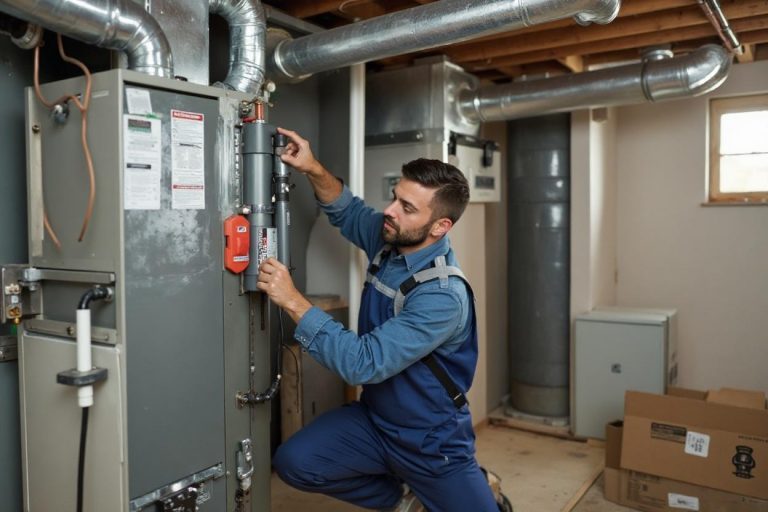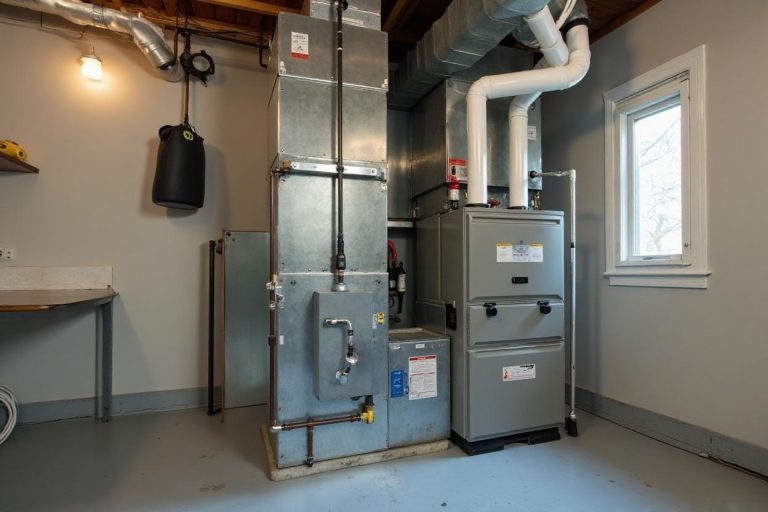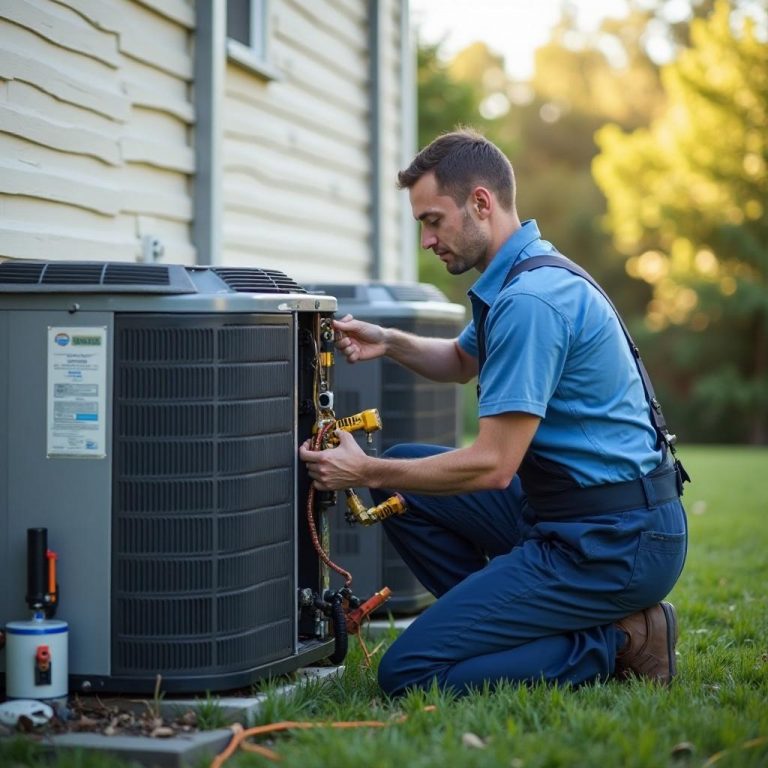How Much Does Home Depot Charge to Install a Furnace in Middlefield, CT? A Cost Guide
Home Depot is a familiar name for many homeowners in Middlefield. You can buy a furnace through them and get set up with an installation partner. That convenience is attractive, especially if your schedule is tight or you prefer a single point of contact. The real question, though, is cost. What does furnace installation through a big-box program usually run, and how does it compare with a local, licensed contractor who knows Middlefield homes, basements, and code requirements?
This guide breaks down typical price ranges, what drives costs up or down, what’s usually included, and https://directhomecanhelp.com/furnace-installation/ where homeowners in Middlefield can save real money. You will also see where a local pro, like Direct Home Services, can provide more value than a national middleman. If you typed furnace installation near me and you live around Lake Beseck, Main Street, or Powder Hill, this is meant for you.
The short answer: typical furnace installation pricing
Most Connecticut homeowners who use a national retailer program for a standard gas furnace end up in the 5,500 to 9,500 dollar range for equipment and basic installation. Some projects land lower if the home is ready for a straight swap. Many run higher if the system needs duct changes, venting upgrades, a new gas line, or electrical work. If you opt for a higher-efficiency 96 to 98 percent AFUE furnace with new PVC venting and a variable-speed blower, it can land between 8,500 and 13,000 dollars or more with a big-box installer.
Local contractors often price the same work between 4,800 and 11,000 dollars depending on brand, efficiency, and scope. The difference is not just markups. National programs add coordination fees, longer scheduling windows, and less flexibility on parts selection. In Middlefield, we see real homes and real budgets. We build quotes around your house, not a template.
What drives the price of a furnace installation in Middlefield
House-by-house differences matter more than the logo on the box. Here are the main factors we see affecting price in town.
System size and load. A 60,000 BTU furnace is common in smaller ranches and capes, while 80,000 to 100,000 BTU models show up in larger colonials and farmhouses, especially those with additions. Proper sizing starts with a Manual J load calculation or at least a careful audit. Oversizing shortens equipment life and wastes gas. Undersizing leaves rooms cold, especially over garages on Way Road and along higher, windier streets.
Efficiency level. Standard efficiency (80 percent AFUE) furnaces often use existing metal venting into a lined chimney or B-vent. High-efficiency (90 to 98 percent AFUE) furnaces condense and need PVC intake and exhaust to the exterior. The labor to run those pipes, patch siding, and address condensate drainage adds to the price. You may gain lower gas bills, but the payback in Middlefield depends on usage, current gas rates, and how tight your home is.
Venting and combustion air. Older homes near Baileyville often vent into a shared chimney with a water heater. If you convert the furnace to sealed PVC venting, the water heater venting may need rework to meet code. That is an extra cost many quotes miss at the start, then add later. A good installer explains this upfront.
Ductwork condition. Crushed or undersized returns, leaky supply trunks, and poor balancing waste energy and make rooms uneven. A quick swap with no duct fixes may cost less today but more over the next ten years. Even a couple of strategic duct changes can improve comfort and cut runtime. If the system serves finished basement space, static pressure rises and the equipment needs a different setup. We see this in Middlefield ranches that were renovated in the 90s.
Fuel type and gas line. If you already have natural gas, a furnace replacement is simpler. If you are on propane, we assess tank location, regulator sizing, and piping. If you are converting from oil to gas or propane, the project needs an oil tank plan, new gas piping, and electrical updates. Conversions can add 2,000 to 5,000 dollars depending on the details.
Electrical and condensate. High-efficiency units need a proper condensate drain with a neutralizer if required by local code or manufacturer. Pumps, tubing, and routing add small but real costs. Many homes also need a new dedicated circuit or upgraded wiring to support ECM blower motors, humidifiers, or air cleaners.

Brand and parts availability. Premium brands and smart communicating controls cost more. During supply crunches, a contractor who can source the right model fast might save you a cold week in January, and that speed sometimes carries a small premium. Local pros tend to know which models have reliable parts support in Connecticut.
Permits and inspections. Middlefield permitting and inspection is straightforward, but it has fees and lead times. A licensed contractor handles the paperwork and meets the inspector. That protects you when you sell the house.
What Home Depot’s program usually includes
Home Depot works through approved local installers. The sales process often starts with a home visit by a project estimator, not the actual installer. You choose a furnace brand and efficiency tier, and the retailer schedules the partner for installation. Inclusions vary by package, but typical items are removal of the existing furnace, setting and connecting the new unit, basic venting hookup, thermostat connection, and haul-away. Warranties are a mix of manufacturer coverage and a labor warranty from the installer, sometimes with extended plans for a fee.
What is often not included in the base price: chimney liner work, major duct modifications, relocation of the furnace, complex PVC vent routing across long runs, gas line upgrades, or water heater vent changes if the old chimney becomes orphaned. Those items become change orders. This is not a knock on the program; it is the reality of hidden conditions. Local contractors face the same surprises, but we usually spot them in the walk-through and quote them clearly.
What a local Middlefield quote should include
A clean, transparent proposal spells out equipment model numbers, AFUE rating, blower type, warranty details, scope of work, and the items we expect to be extra. It should also list permits and inspections, thermostat type, filter size and location, and any accessories like humidifiers or media cabinets. For older basements with low joists, the quote should address clearance and service access so you are not stuck with a unit that no one can work on later.
A quality quote also documents a load calculation or, at minimum, includes the logic behind the chosen BTU size. If your previous furnace was 120,000 BTU but your home now has newer windows and better attic insulation, you may not need that much heat. Right-sizing saves upfront cost and reduces cycling.
Typical price ranges we see in Middlefield
Standard 80 percent gas furnace, basic swap with no duct changes, existing B-vent in good shape: 4,800 to 7,200 dollars with a local pro. Through a big-box program, we often see 5,500 to 8,500 dollars.

High-efficiency 95 to 97 percent gas furnace, new PVC venting through rim joist, new condensate handling, minor duct tweaks: 6,800 to 10,500 dollars locally. Big-box program: 8,500 to 12,500 dollars.
High-efficiency furnace with significant duct changes, new gas line segment, chimney liner for water heater, condensate pump and neutralizer, and smart thermostat: 9,500 to 14,000 dollars locally. Big-box program: 11,000 to 16,000 dollars.
Oil-to-propane conversion with high-efficiency furnace, tank set by a fuel supplier, full venting, and electrical updates: 11,000 to 18,000 dollars total project cost, depending on tank and site work. Retailer programs vary widely on conversions and may require multiple subcontractors.
These are ballpark numbers, not quotes. They reflect recent jobs in Middlefield and nearby towns with similar housing stock, including sections of Durham and Rockfall that share builders and layouts with Middlefield homes.
How to read the fine print on any furnace quote
There are three areas that cause most surprises. First, venting. If your old unit vented into a chimney and you switch to a condensing furnace, make sure the quote includes PVC vent runs with proper pitch, termination kits, and any siding or masonry work. Second, electrical. If you need a new circuit, that needs to be in writing with who pulls the electrical permit. Third, duct static. If the installer measured static pressure and noted restrictive returns, look for a priced option to enlarge them. Skipping this can make a high-efficiency furnace loud and less efficient.
Look at warranty language as well. Manufacturer parts warranties often run 10 years if registered, but labor warranties vary from one to five years. Some big-box plans offer paid service contracts. A local contractor may bundle the first year of maintenance so you do not have to remember the first tune-up.
What homeowners in Middlefield often overlook
Basement moisture. Condensing furnaces add condensate. If your sump pump sits in a damp corner that floods during spring thaw, the route and termination of the condensate line matters. A reliable pump with an overflow safety switch protects you. It costs more, but it prevents a flooded floor. We see this need in homes near brooks or low-grade yards.
Combustion air. Tight houses may need dedicated combustion air or sealed intake to keep the furnace burning correctly. This usually means PVC intake from outdoors. It improves safety and performance, and it affects price.
Return air size. Many older systems have a single small return. High-efficiency blowers like more return. A second return or a larger return drop can drop noise and even out temperatures upstairs.
Thermostat compatibility. If you are upgrading to a communicating furnace or a variable-speed blower, the thermostat may need new wiring or a specific model. We plan for that during the walk-through and keep wire pull costs in check by bundling it with the install day.
Gas vs. propane vs. oil in Middlefield
Most streets served by natural gas offer the lowest operating cost for forced-air heat today. Propane is common on properties off the gas main. Oil furnaces still exist, but many owners who prefer forced air are moving to high-efficiency gas or propane units for cleaner operation and easier pairing with central air.

If you have an oil-fired furnace and are weighing conversion, the numbers go beyond equipment. Consider fuel price trends, tank age, and the resale value of a gas or propane setup. Also look at duct condition, since many oil furnaces were paired with higher static ducts that need work for a modern ECM blower.
The value difference with a local installer
Big-box programs are convenient. The trade-off is control. You do not always know who will show up until scheduling day. The installer may be solid, but you are working through layers. With Direct Home Services, you meet the team that will be in your basement. You get names, cell numbers, and an actual plan, not a generic scope. If we hit an old clay flue liner that needs a stainless insert for your water heater, you hear about it before we cut pipe, with cost and timing spelled out.
This is where many homeowners save money. Clear planning reduces change orders. Right-sizing prevents overspending on a bigger furnace than you need. Proper vent routing avoids drywall repairs later. These are small things that add up to hundreds or thousands saved.
How we estimate jobs in Middlefield
Every home is different, but a consistent process produces reliable results. We start with a visual inspection of the furnace, flue, gas line, and electrical. We measure supply and return sizes, check static pressure, and walk the vent path options. We ask about comfort issues: cold back bedrooms, hot second floors, rooms over garages. We note water exposure risks and drain options. We run a load calculation using square footage, window type, insulation level, and exposure to wind. Then we build two or three options that address your needs and budget.
Many homeowners who search furnace installation near me want a fast, clean install with clear pricing. We can usually swap a like-for-like furnace in one day. High-efficiency upgrades often take a full day, sometimes a day and a half if vent runs are long or the home needs duct changes. We plan around your schedule and the weather, because no one wants to be without heat overnight in January.
Real examples from local homes
A 1,600-square-foot ranch near Lake Beseck replaced a 30-year-old 80 percent furnace with a 96 percent model. The old B-vent was in good shape, but the owner wanted sealed combustion. We ran short PVC through the rim joist, added a condensate pump and neutralizer, and upsized the return drop. Total price was about 8,200 dollars. Gas bills dropped roughly 18 percent compared to the previous winter, and the blower ran quieter.
A 2,400-square-foot colonial off Peters Lane had an oversized 120,000 BTU furnace and duct noise issues. After a load check, we installed a 80,000 BTU variable-speed unit, cut in a second return on the first floor, and sealed leaky trunks. The owner kept an existing smart thermostat. The project landed just under 9,900 dollars. Comfort improved upstairs, and cycling decreased.
An oil-to-propane conversion on a farmhouse west of Route 66 included a new high-efficiency furnace, propane tank placement by the fuel provider, PVC venting, and a chimney liner for the existing atmospheric water heater. Including coordination with the propane company and electrical updates, the total was about 15,800 dollars. The owner later added central air using the same ductwork.
These are the kinds of scenarios that move a quote up or down. A national program would likely quote similar equipment, but the duct and vent planning is where local experience shows.
Timing and availability in Middlefield
During cold snaps, both retailer programs and local contractors book fast. The difference is flexibility. We keep inventory on common sizes and models so we can handle emergency swaps. If you are reading this before your furnace fails, schedule a site visit now. Replacements are smoother and cheaper when we can plan venting and parts ahead of time.
Permits in Middlefield are usually quick, but we build that into the schedule. For simple replacements, we often install within a few days of approval. For conversions or major duct work, we set a clear timeline and keep you in the loop.
Energy rebates and financing
Utility incentives in Connecticut change by season. High-efficiency furnaces sometimes qualify for rebates, though the largest incentives often target heat pumps. Still, a 95 percent or higher AFUE furnace can see modest rebates or low-interest financing through state or utility programs. We help you apply and structure the project so the paperwork is simple. A big-box program may hand you a brochure; a local contractor will fill in the forms and provide the needed spec sheets and model numbers.
If cash flow is a concern, ask about monthly payment options. Spreading an 8,000 to 12,000 dollar project over time can make sense when you factor lower gas usage and the warranty period.
How to compare two quotes fairly
Make sure both quotes list the exact furnace model number, blower type, AFUE rating, and whether the thermostat is included. Confirm venting method, condensate details, and any duct changes. Ask who handles permits, and whether an inspection is required. Check the labor warranty length and what it covers. Ask about post-install tuning: gas pressure, temperature rise, and static pressure measurements should be documented at startup.
One more tip: request a total out-the-door price, including tax, permit, and disposal. Change orders should be priced before work begins unless they come from an uncovered condition that no one could see. Clarity on the front end avoids frustration on install day.
Is Home Depot the right route, or is local better?
If you want a one-call retail experience and you are comfortable with a potentially higher price for that structure, Home Depot can work fine. If you prefer a direct relationship with the crew in your home and a tighter handle on cost, a local licensed contractor is often the better fit. In Middlefield, where many homes have quirks you only learn after crawling into the joist bay, closer attention usually saves you money and headaches.
For a straight replacement with no duct changes, we often beat big-box pricing by hundreds to thousands, while offering faster scheduling and more detailed commissioning. For complex jobs, we win on planning and execution, which shows up in quiet operation, even heat, and lower long-term costs.
Ready for a clear, local quote in Middlefield?
If you searched furnace installation near me and want pricing that reflects your actual home, let’s talk. Direct Home Services serves Middlefield, Durham, and nearby towns with licensed installation, honest sizing, and careful venting and duct work. We handle permits, inspections, and startup readings, and we stand behind our labor. We can give you a firm quote after a short visit, often the same day.
Call or message to schedule a free in-home assessment. Bring any quote you have from a retailer program. We will line it up side by side, point out differences in scope, and show you where you can save without cutting corners. Winter in Connecticut rewards a furnace that is sized right, vented right, and installed by people you can reach by name. We do that every day in Middlefield.
Direct Home Services provides HVAC installation, replacement, and repair in Middlefield, CT. Our team serves homeowners across Hartford, Tolland, New Haven, and Middlesex counties with reliable heating and cooling solutions. We install and service energy-efficient systems to improve comfort and manage utility costs. We handle furnace repair, air conditioning installation, heat pump service, and seasonal maintenance. If you need local HVAC service you can depend on in Middlefield or surrounding areas, we are ready to help.